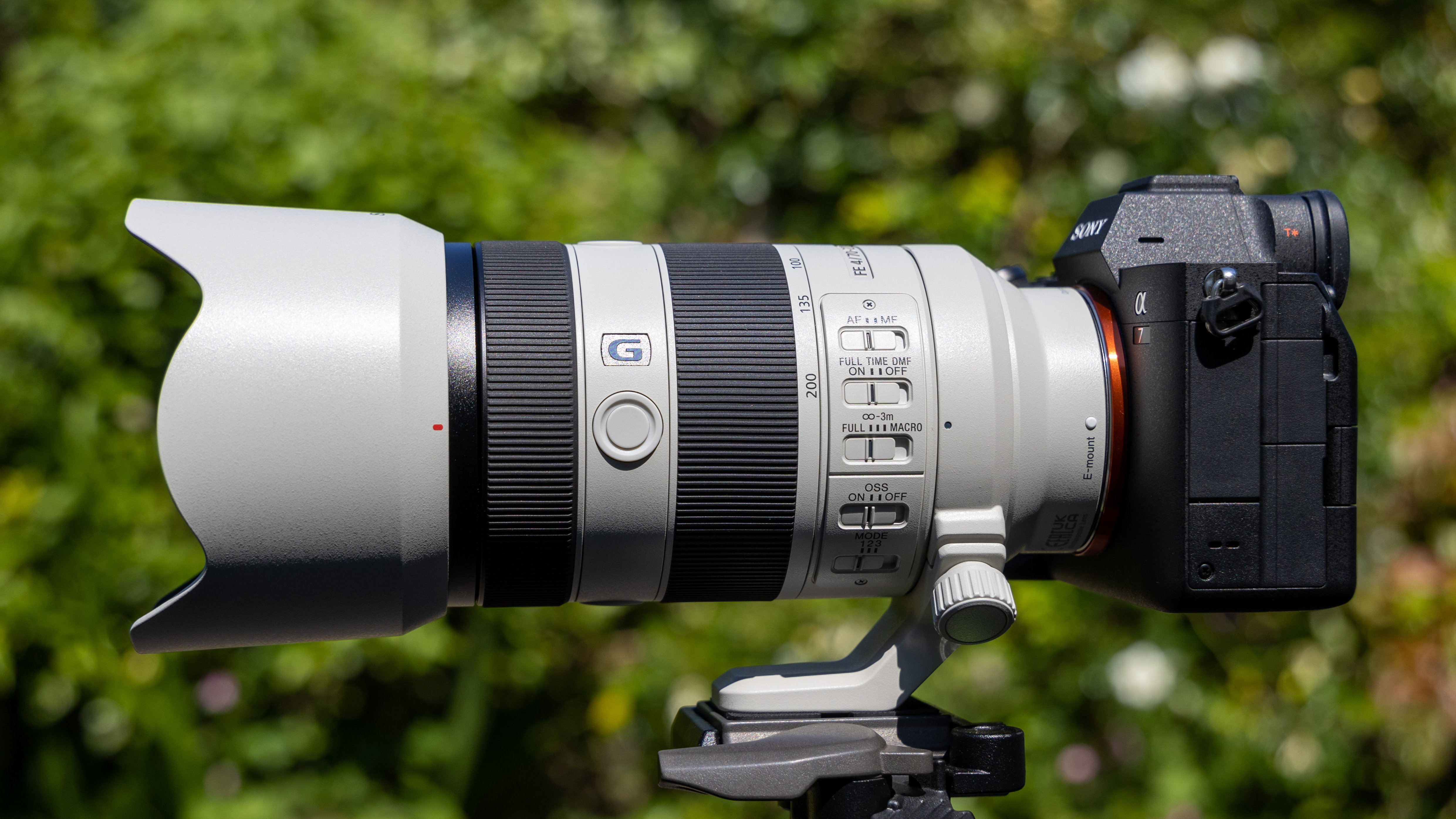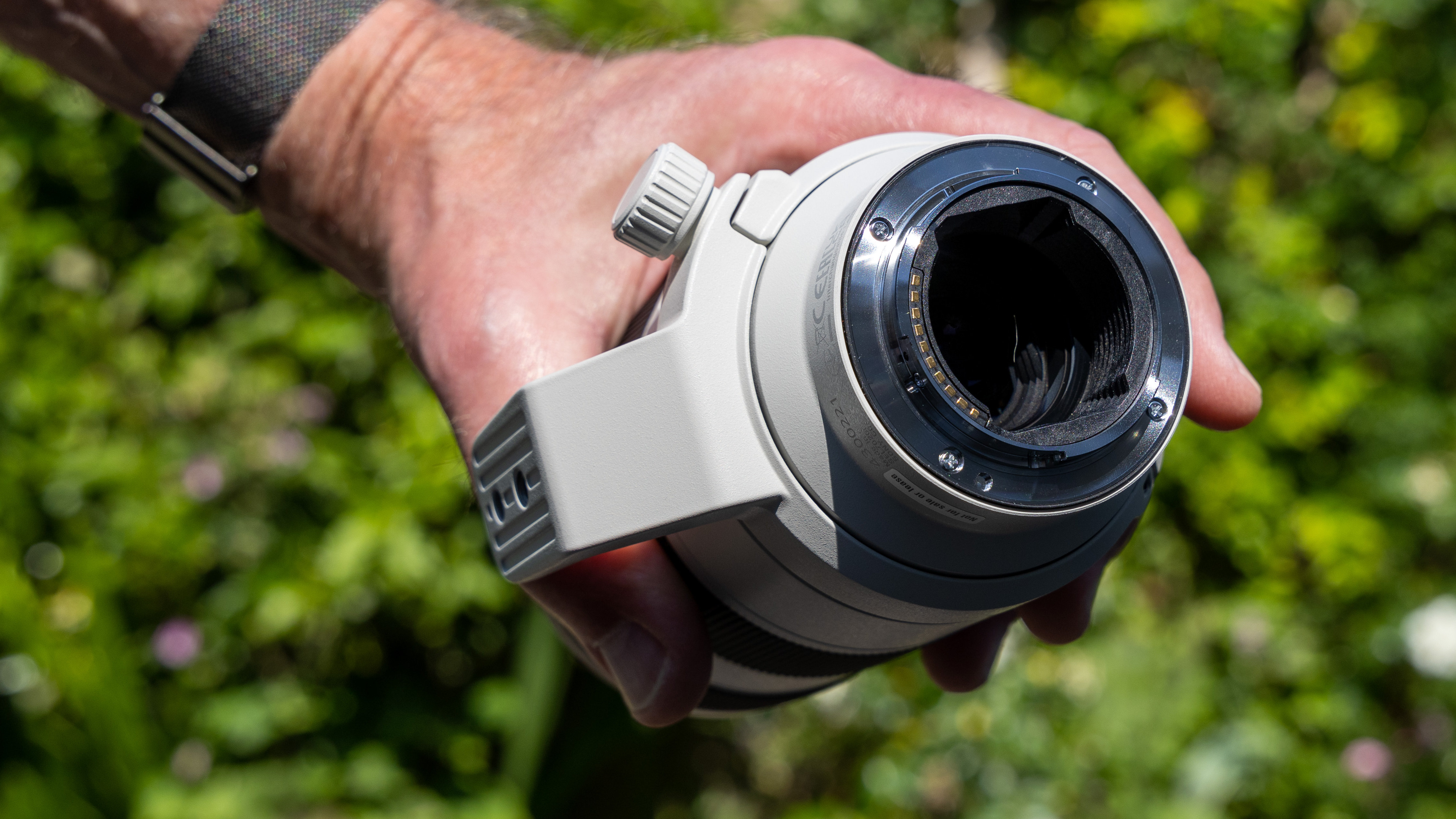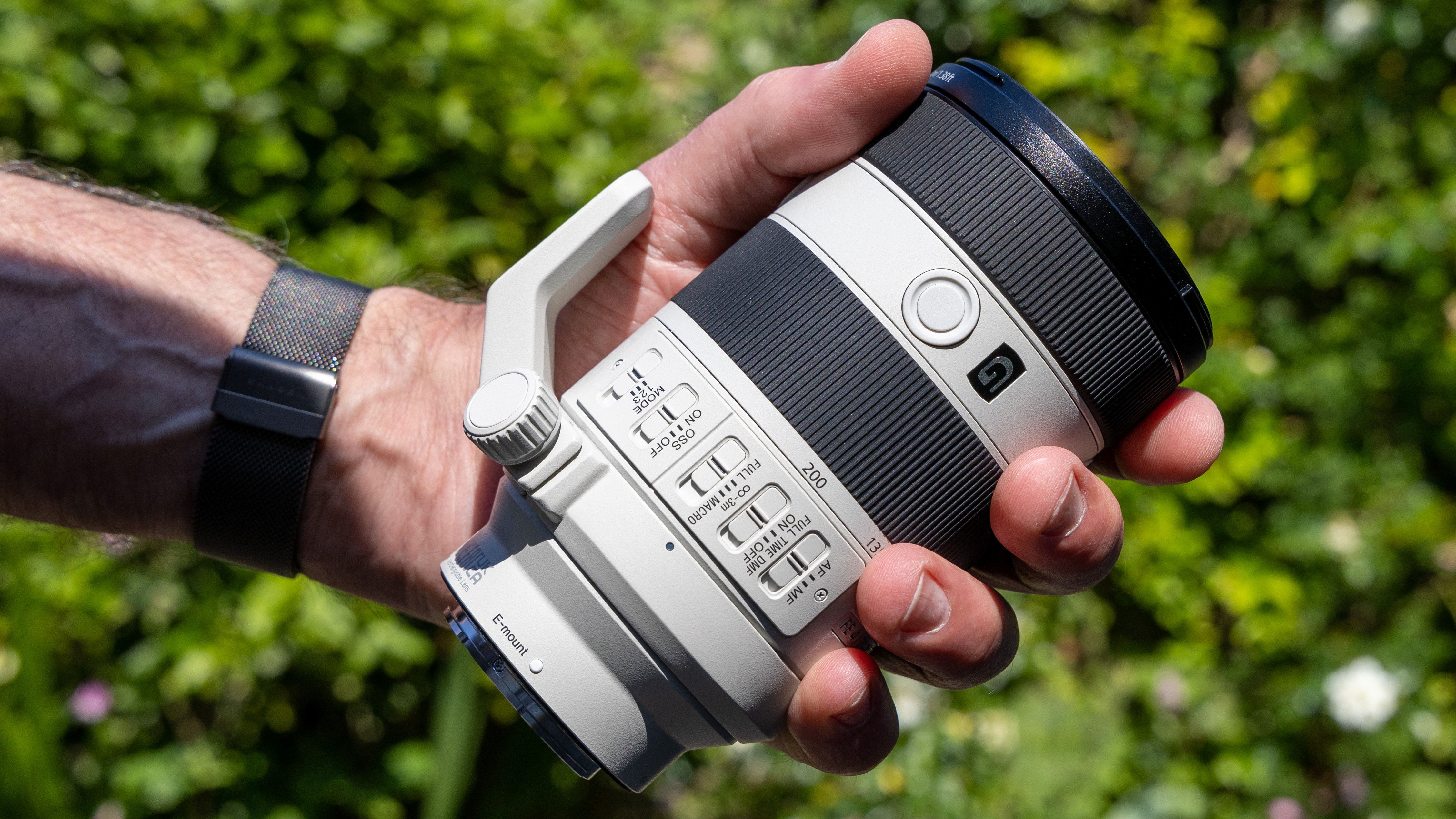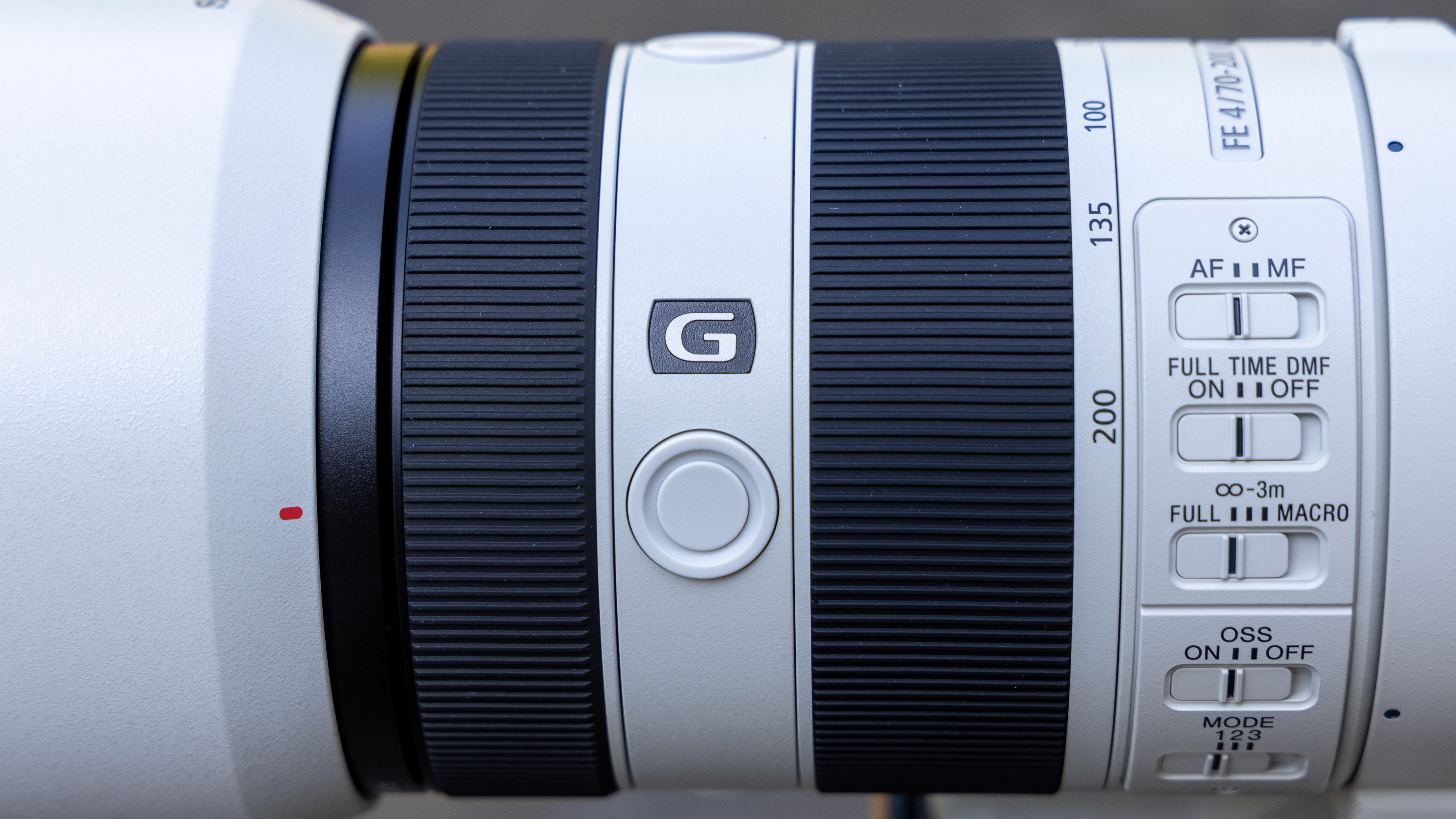
The Sony FE 70-200mm F4 Macro G OSS II has a tough act to follow. We were mostly impressed by the original FE 70-200mm f/4 G OSS, with a couple of reservations. It had good glass, fast autofocus, decent optical image stabilization and up-market handling exotica. What’s not to love? Well, we were underwhelmed by the lens’s edge/corner-sharpness at both ends of the zoom range, where color fringing was also quite noticeable. The maximum magnification ratio of 0.13x was pretty par for the course, but nothing to write home about. The Mark II edition sets out to take everything up a notch or two.

Specifications
Mount: Sony E (FE)
Full frame: Yes
Image stabilization: Yes
Autofocus: Yes
Lens construction: 19 elements in 13 groups
Angle of view: 34-12 degrees
Diaphragm blades: 9
Minimum aperture: f/22
Minimum focusing distance: 0.26m (W) 0.42m (T)
Maximum magnification ratio: 0.5x
Filter size: 72mm
Dimensions: 82x149mm
Weight: 749g
Key features
A key attraction of choosing an f/4 zoom over an f/2.8 is that it’s likely to be more compact and lightweight. That was certainly true of the original Sony lens and the Mark II takes downsizing a step further, shaving 15 per cent off the length and 46g off the weight.
Part of the downsizing is courtesy of the optical design featuring two less elements in total, based on 19 elements in 13 groups. These include three ED (Extra-low Dispersion) elements and a Super ED element, aiming to boost sharpness, contrast and color quality while minimizing chromatic aberrations. There’s also an aspherical element plus an AA (Advanced Aspherical) element, aiming to further enhance sharpness and contrast.

Of course, it’s not all about sharpness and despite ‘only’ having an f/4 aperture rating, there’s plenty of scope for blurring the background with a tight depth of field, especially at longer zoom settings. A 9-blade diaphragm aims to maintain a well-rounded aperture when stopping down a little, helping to retain the quality of bokeh.
Naturally, you can get a very tight depth of field when shooting close-ups, even with narrow apertures. The Mark II edition of the lens focuses much closer than the original, featuring a 0.5x maximum macro magnification ratio. As such, small objects can be reproduced at half-life size on the camera’s image sensor, enabling huge magnification when viewing the resulting images on screen or in print. Add a Sony SCL20TC 2.0x teleconverter into the mix and you can boost the macro potential to a full 1.0x or 1:1, as well as doubling the maximum focal length to a super-telephoto 400mm. As always, however, you’ll lose a couple of f/stops along the way, so the widest available aperture becomes f/8.

Another upgrade in the Mark II is a new autofocus system. There was nothing wrong with that of the original, which was based on dual linear stepping motors. This time around, there’s a floating focus system that separates the focusing elements into two groups. Sony claims that autofocus is more precise and 20 percent faster than in the original lens, along with a reduction in focus breathing and virtually silent operation, catering to videographers.
The optical stabilizer represents another improvement, with an additional mode for tracking erratically moving subjects as well as the usual static and panning modes featured in the original lens.

Build and handling
True to its billing, the lens feels comfortably compact and lightweight in the hand, measuring 82x149mm and weighing in at 749g. Even so, it comes complete with a removable tripod mounting ring that maintains an excellent balance when using a tripod or monopod, for both landscape and portrait orientation shooting. The ring also makes it quick and easy to switch between the two orientations without the need for an L-bracket. Unlike many recent tripod rings, however, it doesn’t have an Arca-Swiss compatible mounting foot.

Although the lens is relatively small at 70mm, it doesn’t feature the type of internal zoom mechanism that’s common with 70-200mm f/2.8 lenses. As such, the inner barrel extends as you sweep through the zoom range up to the 200mm mark. That said, it’s the same deal with both of Canon’s recent RF 70-200mm f/2.8L IS USM and RF 70-200mm f/4L IS USM zooms for EOS R-system cameras. The situation’s not ideal when using a gimbal, as the center of gravity shifts at different zoom settings. There’s also more of a worry about dust getting into the lens but extensive weather-seals are incorporated into the design, to reduce the risk.

Handling refinements include a switch for AF/MF focusing modes, plus an additional switch for enabling or disabling full-time DMF (Direct Manual Focus) override. There’s also a three-position autofocus range limiter, which can lock out the short or long end of the focusing range, as well as giving full travel. As with focus modes, there are two optical stabilization switches on hand, one for on/off and the other for selecting any of the three OS modes.

A zoom lock switch is fitted that can be engaged at the shortest zoom setting but can’t be used at other focal lengths. Either way, our review sample didn’t suffer from any zoom creep whatsoever. The zoom and focus rings work smoothly and precisely while, further up front, there’s a rank of three customizable AF-On/AF-Hold buttons. These fall neatly under the thumb in both landscape and portrait orientation shooting. The lens also comes complete with a petal-shaped hood which, like the lens itself, is finished in white to minimize heat build-up when shooting under direct summer sunlight, and just to look posh.

Performance
Performance is absolutely top-drawer. The Mark II lays to rest all of the criticisms we had of the original edition. Sharpness is spectacular with a massive improvement in edge/corner sharpness at both ends of the zoom range. And while the earlier lens gave noticeable lateral chromatic aberration toward the edges and corners of the frame, the Mark II virtually eliminates this altogether. Resistance to ghosting and flare is also very good.
Distortion takes a turn for the worse, with a noticeable pincushion that gets steadily poorer as you extend through the zoom range. To be fair though, many recent lenses designed for mirrorless cameras are unusable without automatic in-camera correction, which can’t be disabled, and the Mark II certainly doesn’t fall into that category.
Unlike Canon and Nikon who nail their colors to the mast, Sony generally seems quite cagey about the effectiveness of its stabilization systems. Testing the lens with an A7 IV camera that features an in-body stabilizer, we found the combined sensor-shift and in-lens stabilization gave about a 3-stop benefit throughout the zoom range. As such, we were able to get consistently sharp shots in handheld shooting at 200mm with a shutter speed of 1/25th of a second. That’s not bad but it lags behind the performance we’re used to getting with recent Canon and Nikon mirrorless full-frame cameras and lenses, which often give as much as 6-stop to 8-stop effectiveness.
Back on the plus side, the autofocus system is incredibly fast, ultra-precise, and deathly quiet. All in all, the lens doesn’t have class-leading image stabilization but all other aspects of image quality and overall performance are fabulous.
Sample images













Lab results
We run a range of lab tests under controlled conditions, using the Imatest Master testing suite. Photos of test charts are taken across the range of apertures and zooms (where available), then analyzed for sharpness, distortion, and chromatic aberrations.
We use Imatest SFR (spatial frequency response) charts and analysis software to plot lens resolution at the center of the image frame, corners, and mid-point distances, across the range of aperture settings and, with zoom lenses, at four different focal lengths. The tests also measure distortion and color fringing (chromatic aberration).
Sharpness
For sharpness, there was room for improvement in the original Sony 70-200mm f/4 lens. The Mark II fills that room admirably, with superb levels of sharpness throughout the entire zoom range, from the center of the image frame right out to the extreme edges and corners.
Fringing
The Mark II hits the original lens out of the park for control over color fringing. There’s practically none to be seen at every combination of focal length and aperture setting, right out to the corners of the frame.
Distortion
Less of an Achilles heel, more a slight tweak of the angle, the Mark II fares rather worse than the original lens for distortion. Pincushion is noticeable at 70mm and gets steadily worse as you extend through the zoom range. Even so, automatic in-camera is available which effectively makes it a non-issue.
Verdict
Many professional and enthusiast photographers consider a 70-200mm f/2.8 lens as the one zoom they ‘have to have’. But do you? If you don’t feel a burning need for that extra f/stop, this f/4 lens delivers spectacular image quality and all-around performance, wrapped up in a comparatively compact and lightweight yet robust build, at little more than half the price. It also adds 0.5x macro magnification for extreme close-ups. All in all, the Mark II edition of this Sony lens is a cracker. Compared with the original, it’s better, faster, and more!
Read more: find out more about the best Sony lenses in our guide. Or if you are interested in sports or wildlife photography then check out our guides to the best lenses for sports and the best lenses for bird photography and wildlife.







